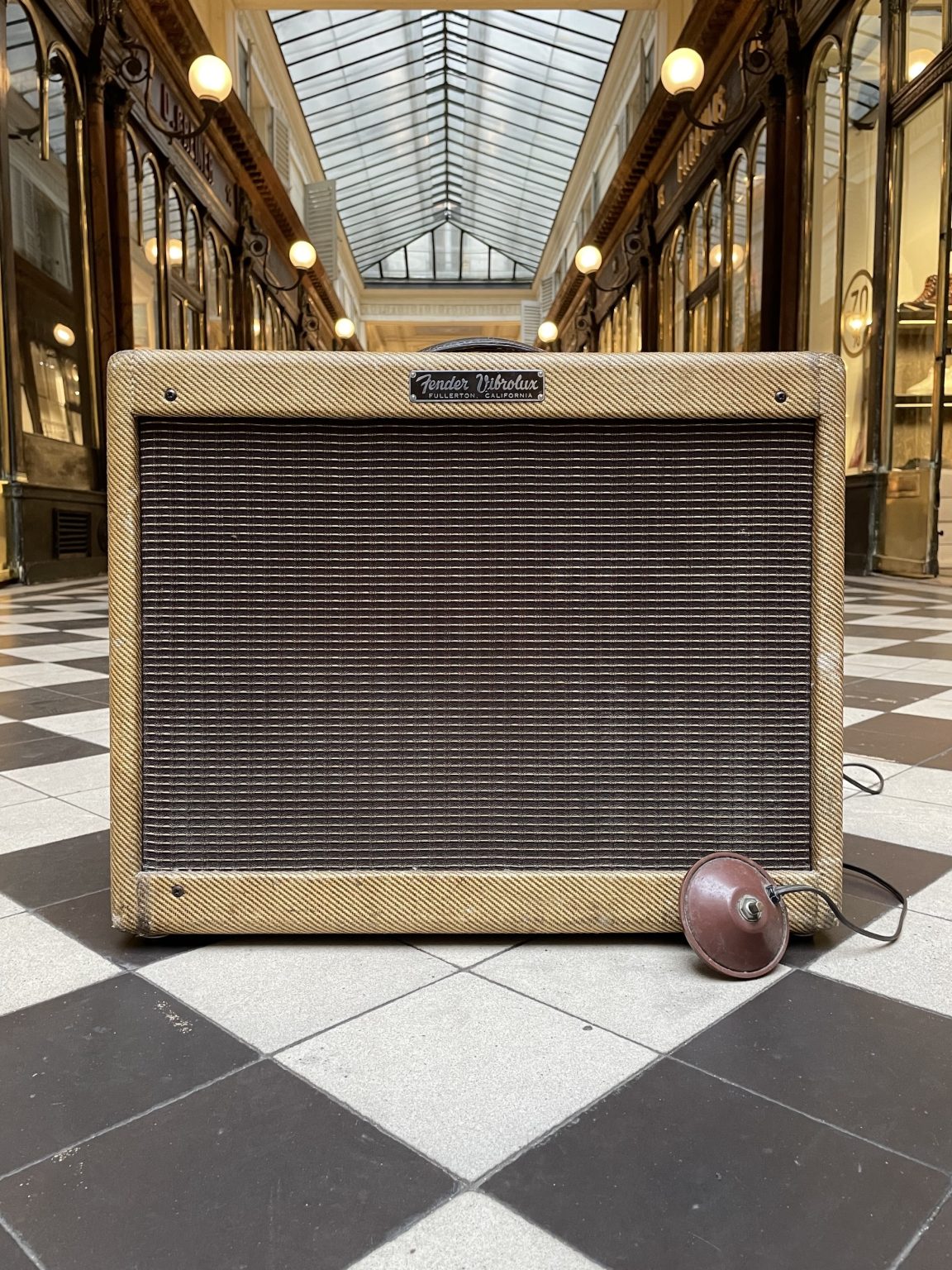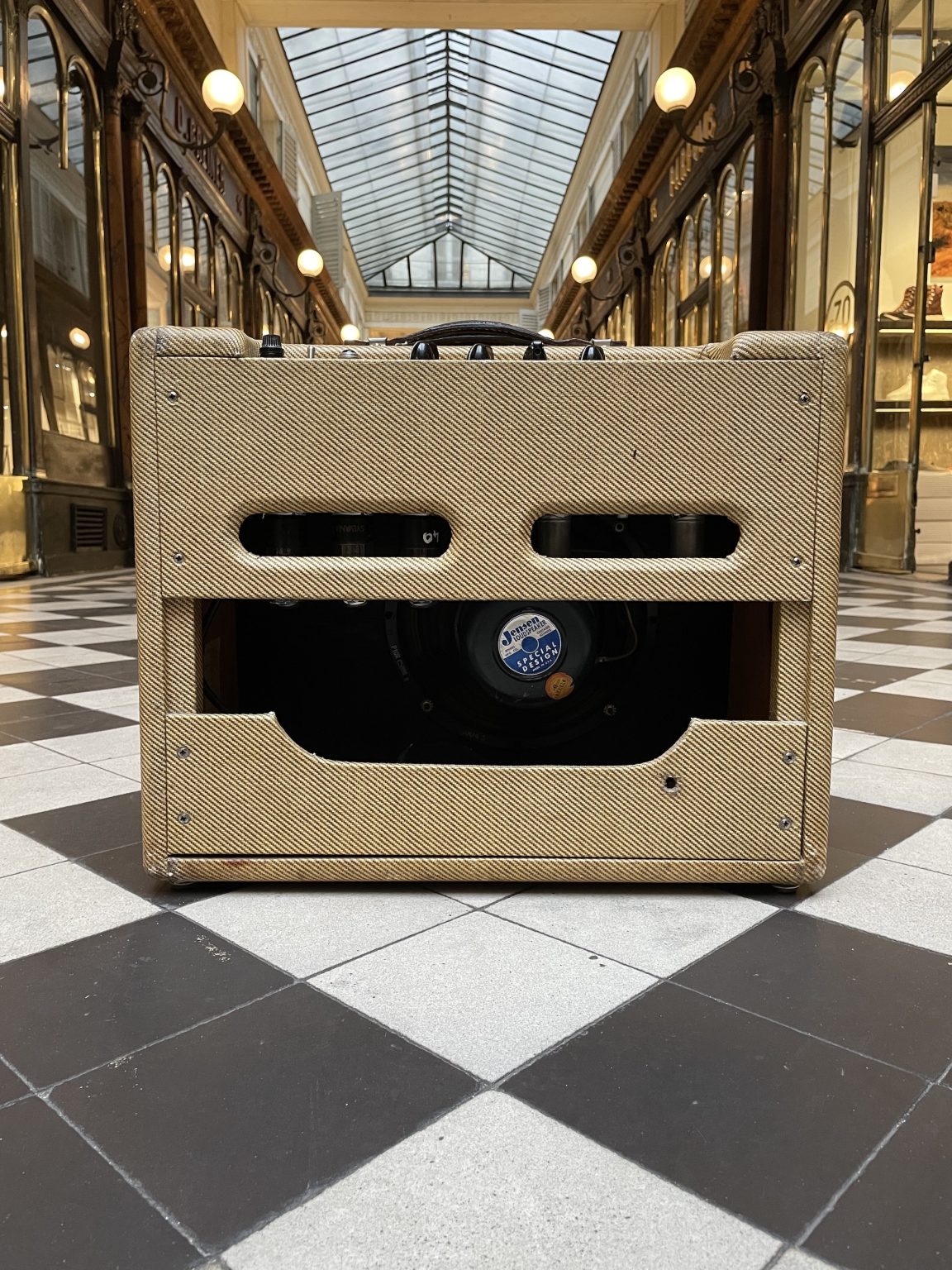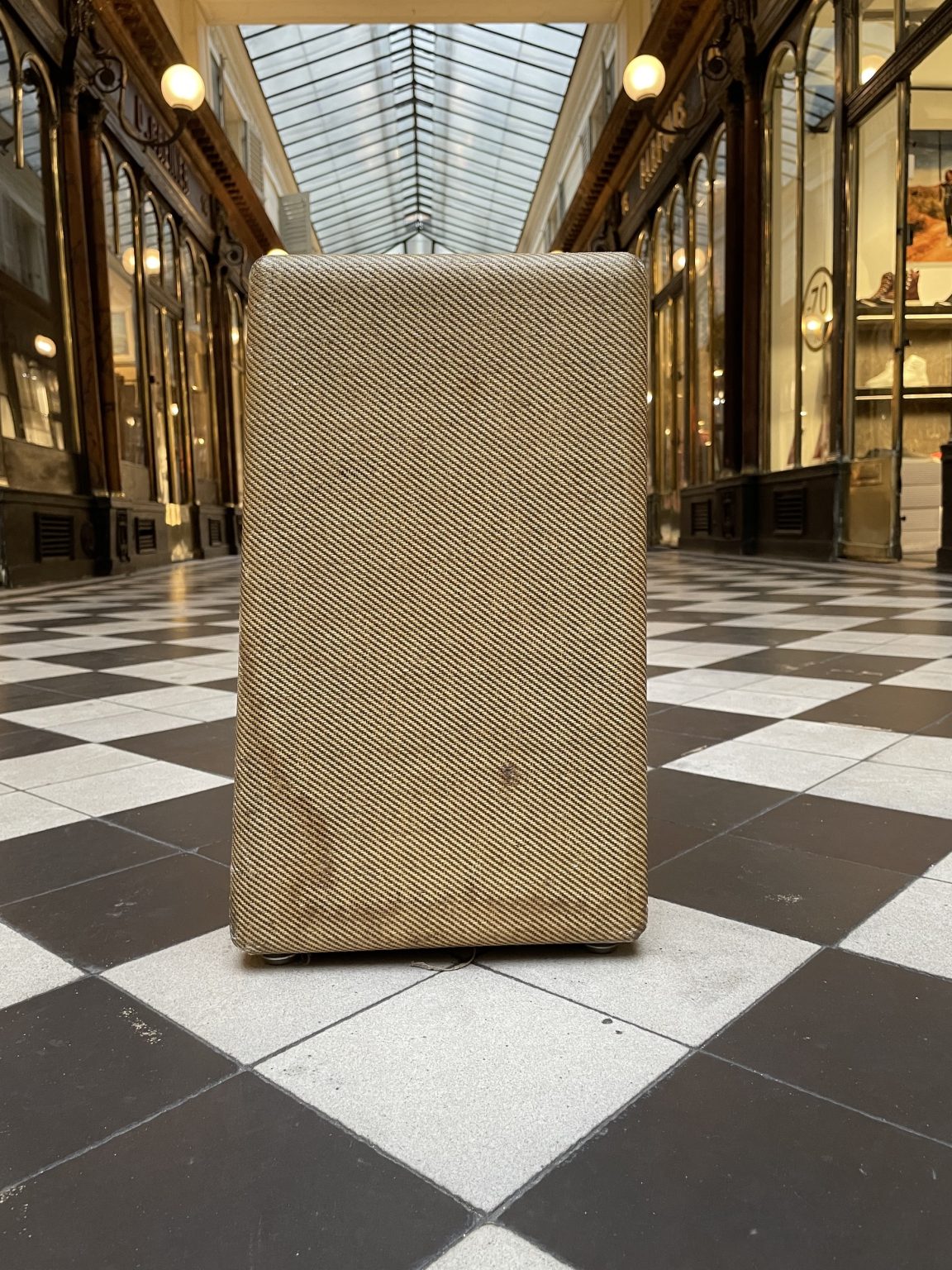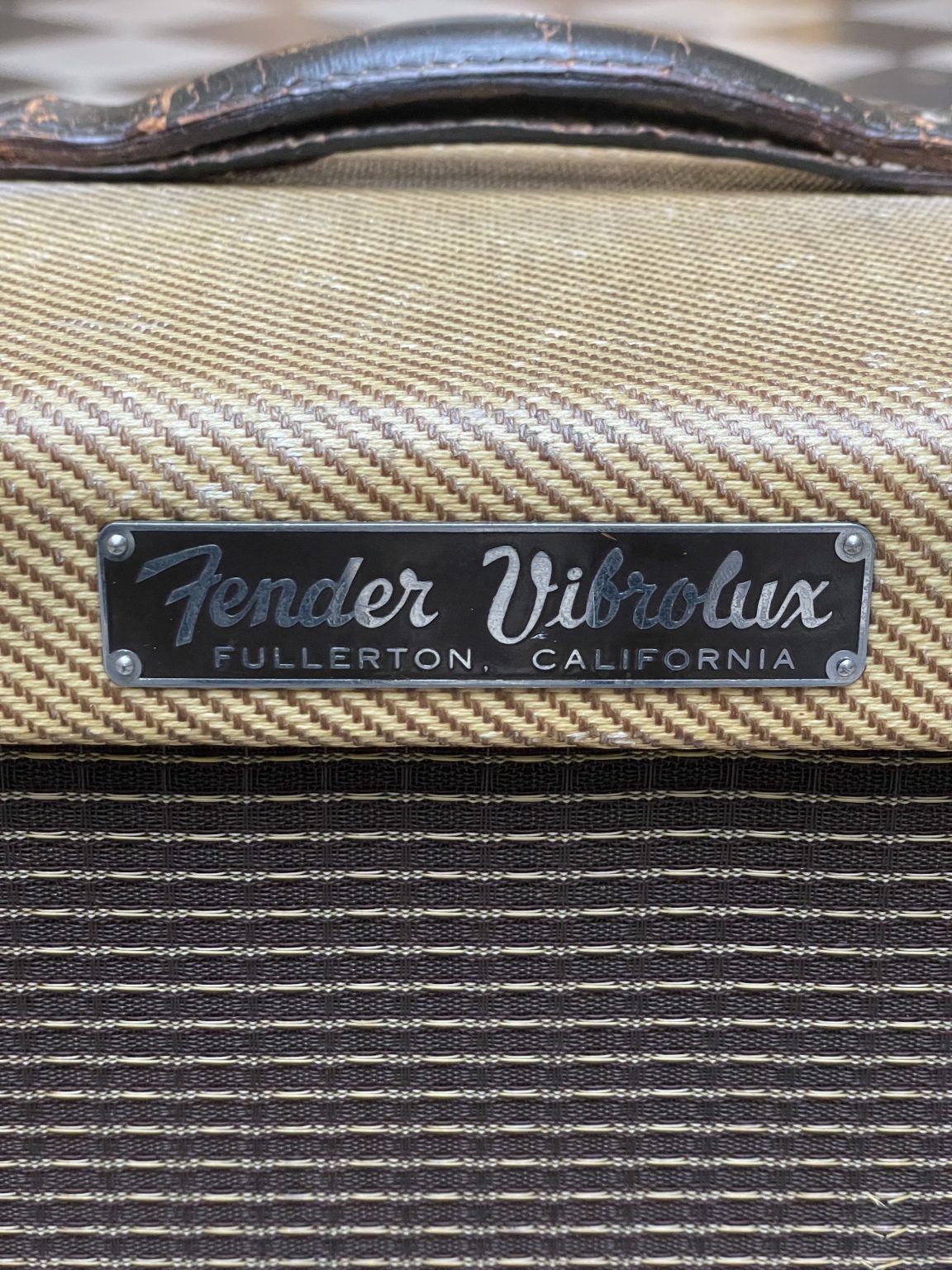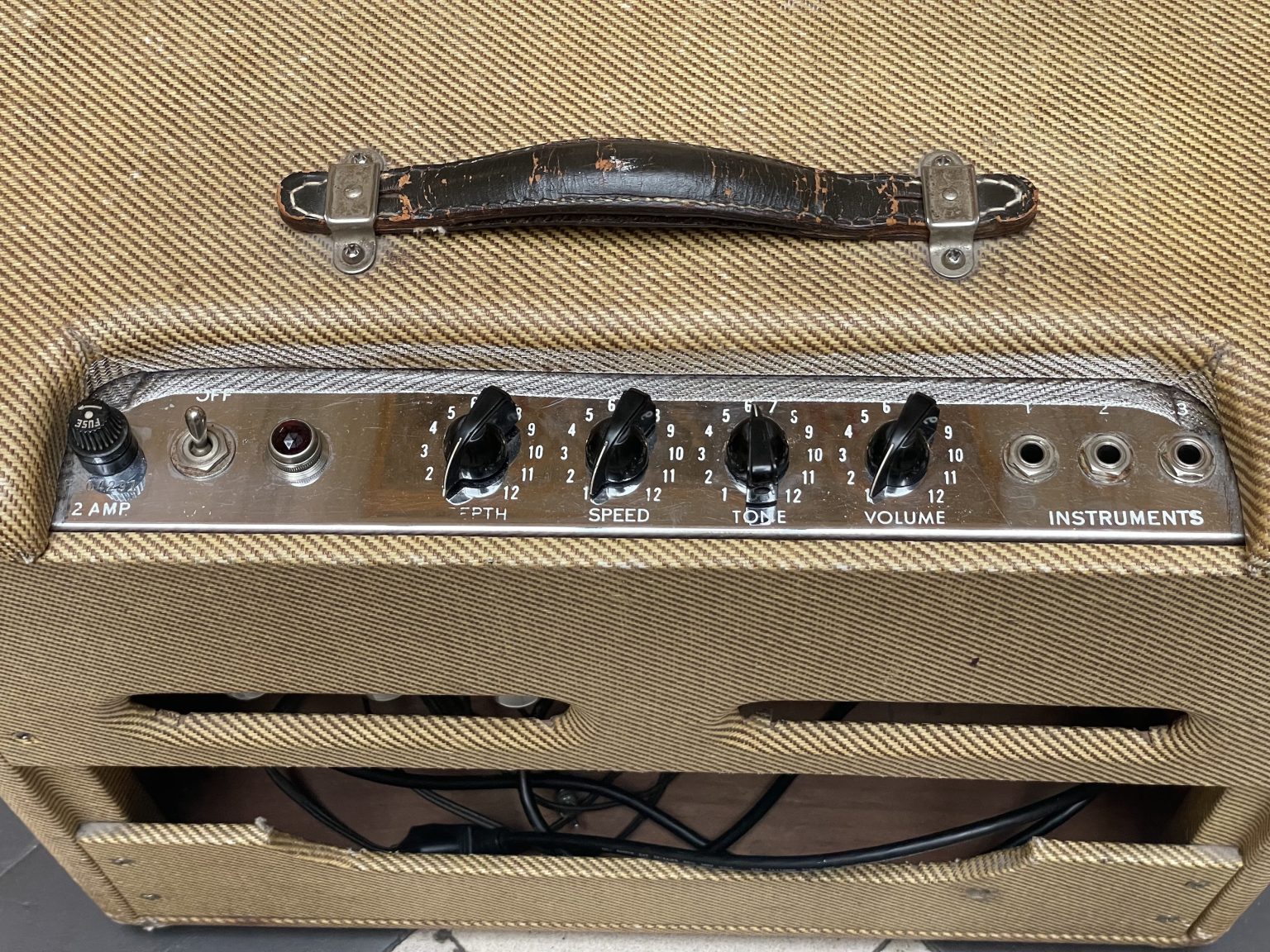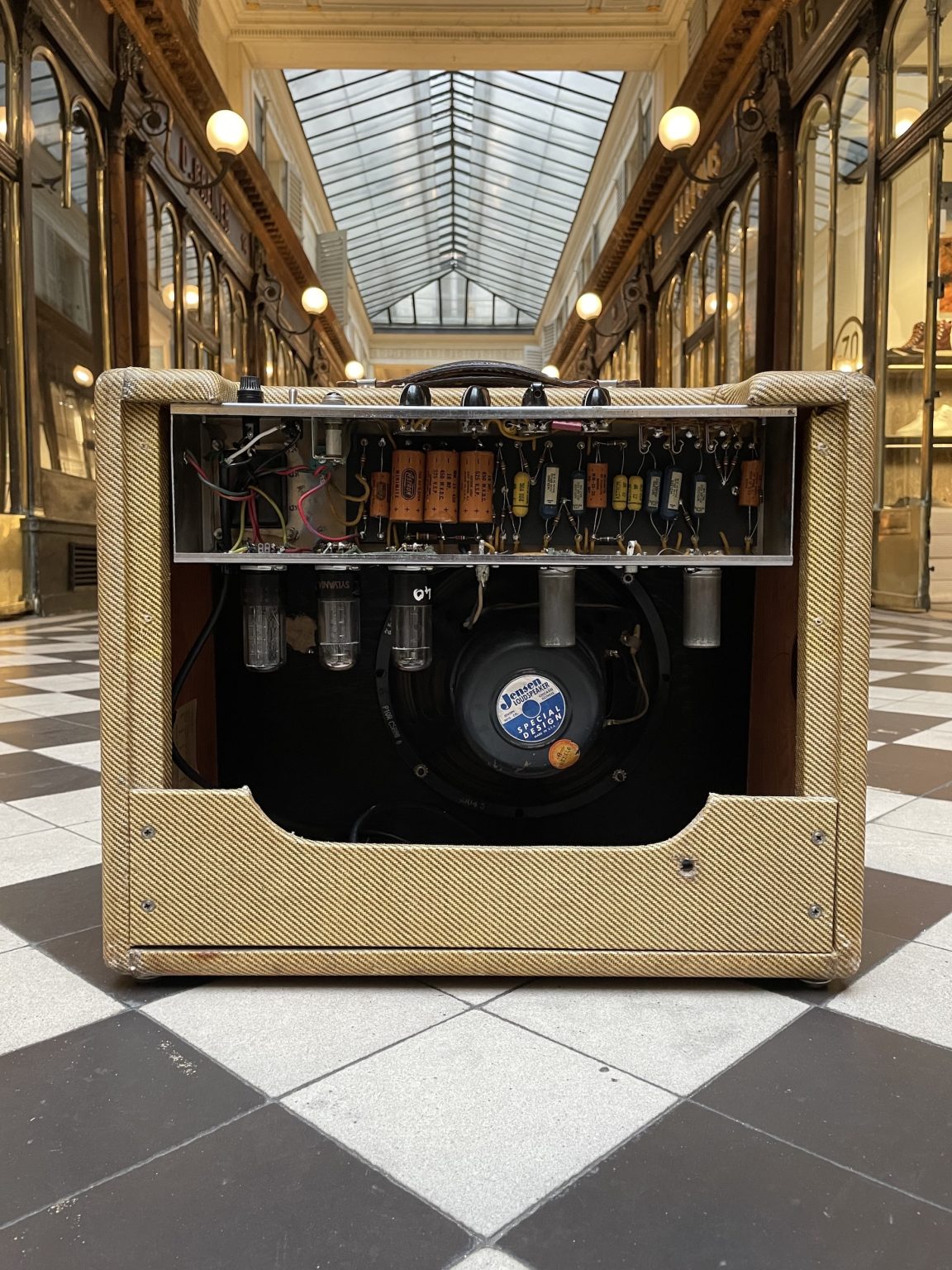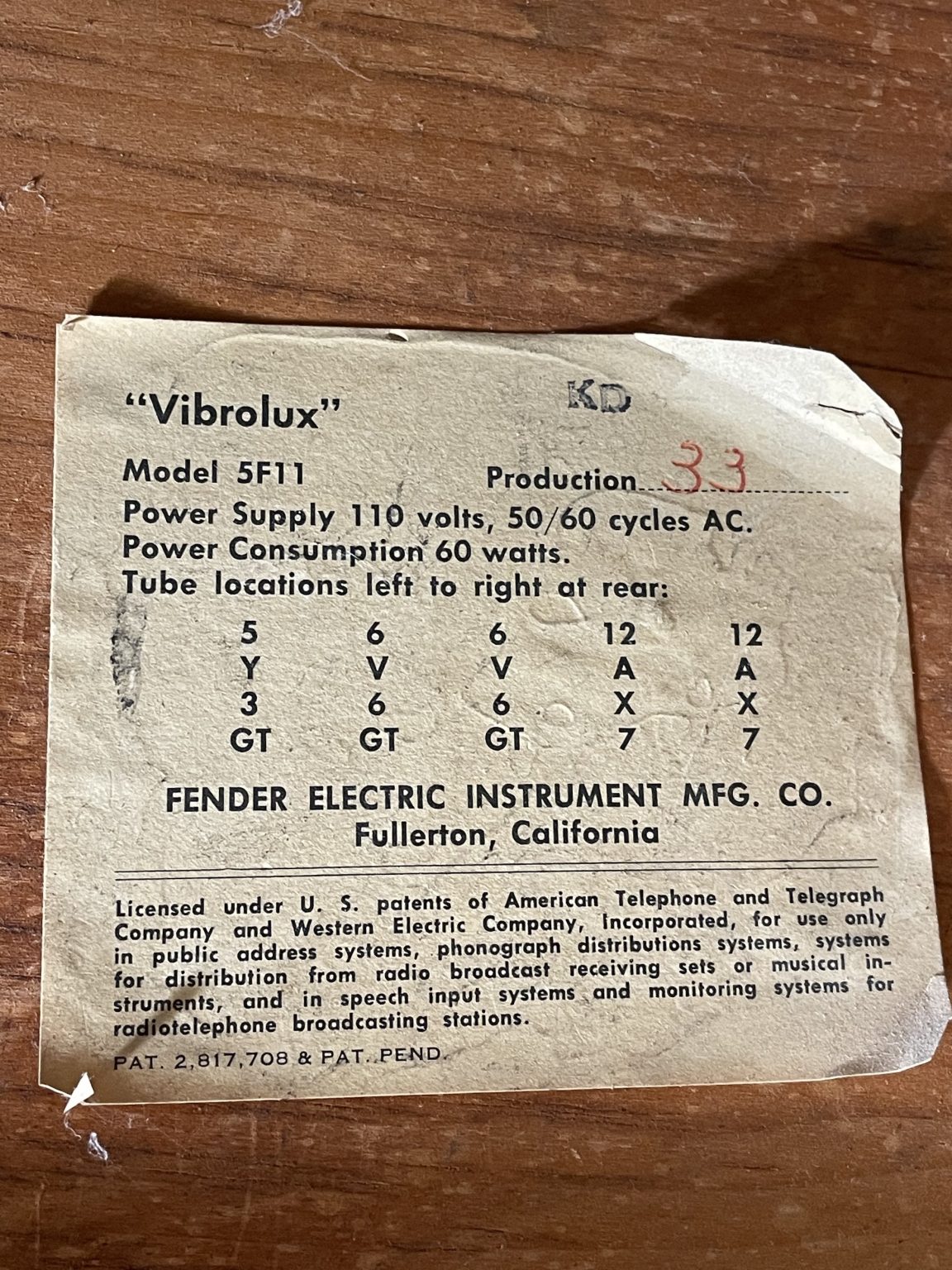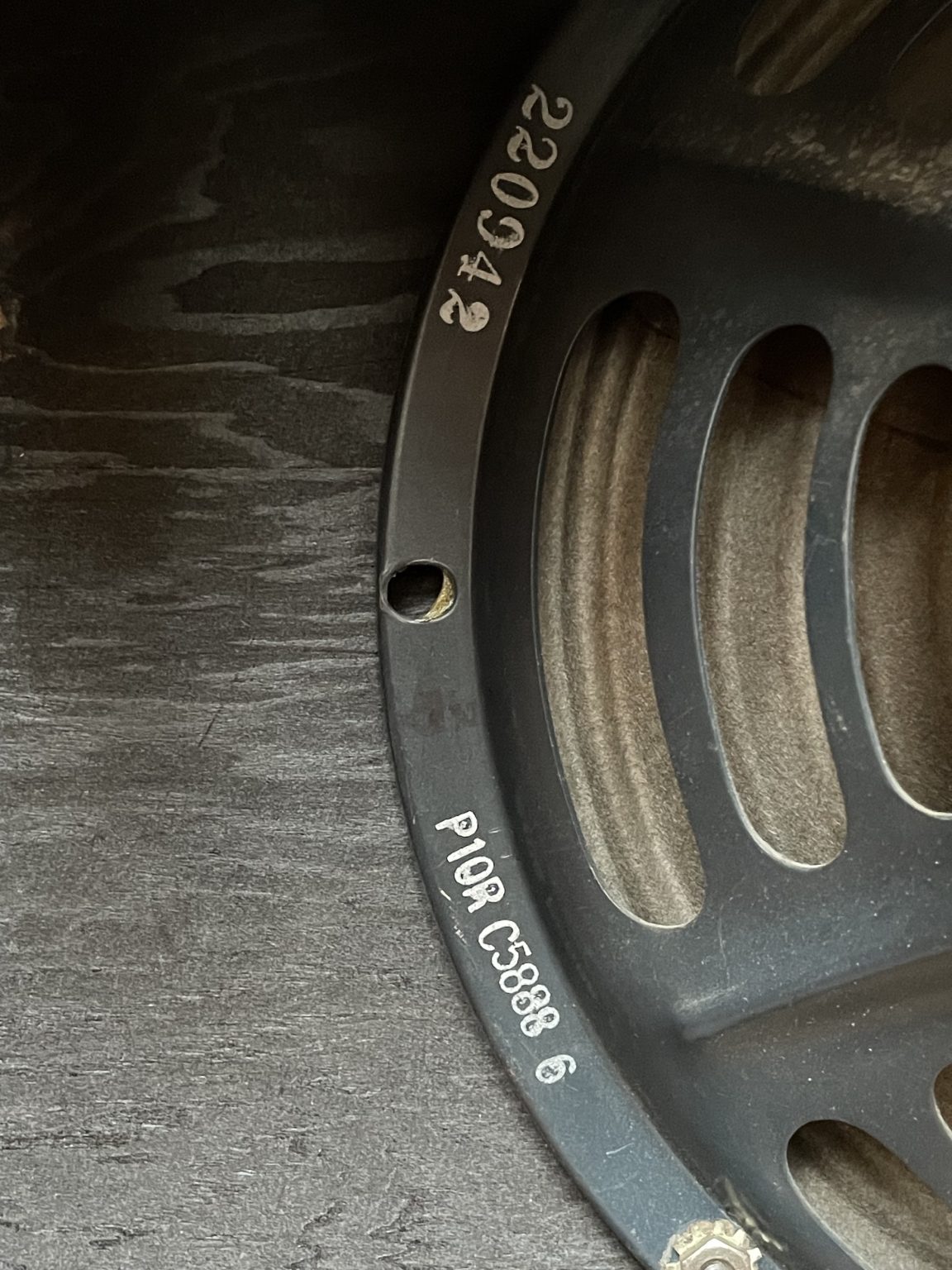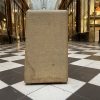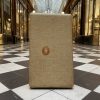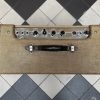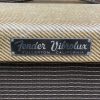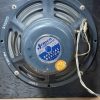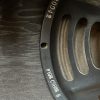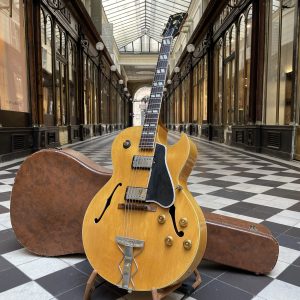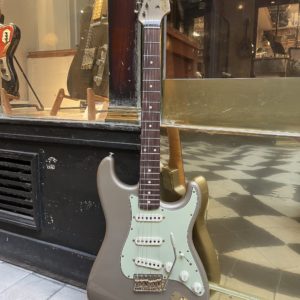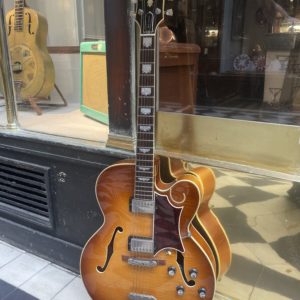1961 FENDER VIBROLUX 5F11
€7.250,00
In stock
The prices indicated correspond to the price in the case of payment in-store or by bank transfer. In the case of payment by credit card via the website, a processing fee of [3.25% + €0.25]* will be applied to the total amount of the basket, including delivery costs.
1961 Fender Vibrolux 5F11 Tweed, in excellent cosmetic and working condition.
Here is an incredibly well-preserved example from the end of the tweed amplifier production period: the serial number and the stamp on the label inside the cabinet indicate 1960 as the build year, but several original parts are dated from early 1961 – this amplifier therefore left the Fullerton factory no earlier than the spring of that year, just as production was about to switch to the 6G11 brownface/brown tolex version! The Vibrolux was introduced in 1956 and features a significant innovation in Fender’s history: along with the Tremolux introduced the previous year, it is among the first amplifiers from the Californian manufacturer equipped with a built-in tremolo effect. Tremolo, an effect that modulates the volume of the audio signal, appeared on amplifiers from other manufacturers in the late 1940s (for example, the Gibson GA-50T or several Danelectro models) and quickly became a central characteristic of the amplified sound of the 1950s – as for Fender’s tremolo, many aficionados swear by the circuit initially used on the tweed amplifiers. The Vibrolux is also the companion model to the Harvard 5F10, with which it shares most of its components except for the tremolo circuit. They were introduced to offer a mid-range option between the student models Champ and Princeton and the Deluxe, a professional model developing significantly more power – in this respect, they are eminently well-suited to the needs of modern guitarists, neither too powerful to be used at home nor too flat-sounding at low volume like single-ended models can be.
The 5F11 is equipped with a 10-inch Jensen P10Q speaker driven by a pair of 6V6 tubes in push-pull configuration, delivering approximately 10 watts of output power. The first preamplifier stage consists of half of a 12AX7 tube, the second triode of this tube being dedicated to the tremolo circuit’s oscillator. A second 12AX7 acts as the second preamplifier stage after the volume and tone controls, and as a cathodyne phase inverter for the output stage. The low-frequency tremolo oscillation is injected into the power stage’s bias circuit, producing the characteristic amplitude variations of the effect – this arrangement offers a particularly organic and musical result that would disappear in subsequent years with successive revisions of the tremolo circuit. Finally, the entire unit is provided high voltage via a 5Y3 rectifier tube, traditionally used by Fender on its moderately powered models. The control panel, located on the top of the amplifier, includes three instrument inputs with Volume and Tone controls plus Speed and Depth for the tremolo.
The example shown here remains in very good condition, with all of its main original parts: it retains its Jensen speaker and the complete set of Schumacher transformers; the tube set consists of a 1954 Philco 5Y3, a matched pair of vintage Sylvania 6V6GT tubes, and two vintage Sylvania 12AX7 tubes – all have been through a tube tester and exhibit satisfactory emission characteristics; the power cord has been replaced with a modern 3-prong cord allowing for chassis grounding; with all the original components present when the amp came in the shop, we meticulously applied ourselves to the complete restoration of the circuit, taking care to preserve of the original circuit’s appearance as possible: the electrolytic capacitors, defective after 60 years of use and major sources of trouble when left in the circuit, have been replaced with high-quality modern parts; all signal capacitors and resistors have been measured and checked, as well as all solder joints, to ensure the proper functioning of the circuit. Finally, the amplifier has been thoroughly cleaned, the tube sockets, jack sockets, and potentiometers lubricated, in order to restore all of its sonic qualities and allow smooth, safe operation. Tweed covering is in great shape, so is the stencilled lettering on the control panel – and note the original handle is still present and hanging in there!
110V model, sold with an external voltage transformer and a protective cover. Original tremolo footswitch (extremely rare!) included.
Related products
-
1960 GIBSON ES-175DN
€27.800,00Original price was: €27.800,00.€25.500,00Current price is: €25.500,00. -
1997 GIBSON TAL FARLOW CUSTOM
€8.950,00Original price was: €8.950,00.€7.450,00Current price is: €7.450,00.


